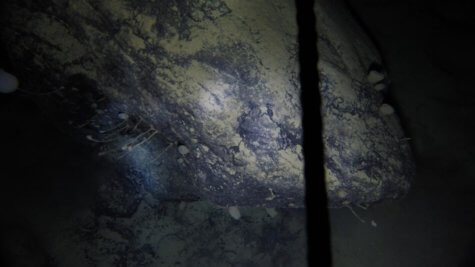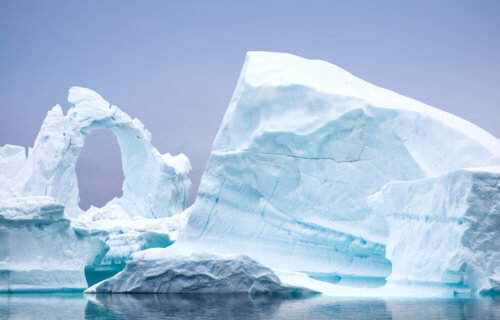CAMBRIDGE, United Kingdom — There may be more life on planet Earth than anyone could have dreamed was possible. During an exploratory survey of Antarctica, researchers from the British Antarctic Survey say they’ve discovered life growing deep beneath the chilly continent’s ice shelves. The accidental find is also bringing up even more questions, since biologists didn’t even think life could exist in such a place.
Scientists made the discovery while drilling through about 3,000 feet of ice in the Filchner-Ronne Ice Shelf. This location sits over 160 miles inland from the open sea, in complete darkness, and with temperatures hovering around 28 degrees Fahrenheit. As the team’s cameras reached the sea floor, researchers found a rock covered in stationary animals such as sponges and several other creatures which may have never been seen before. It’s the first time humans have uncovered life on a sea floor boulder.
“This discovery is one of those fortunate accidents that pushes ideas in a different direction and shows us that Antarctic marine life is incredibly special and amazingly adapted to a frozen world,” says biogeographer and lead author Dr. Huw Griffiths in a media release.
“Our discovery raises so many more questions than it answers, such as how did they get there? What are they eating? How long have they been there? How common are these boulders covered in life? Are these the same species as we see outside the ice shelf or are they new species? And what would happen to these communities if the ice shelf collapsed?”
Antarctica remains largely unexplored

Study authors say these ice shelves are one of the most unexplored environments in the southern hemisphere. Although they cover more than 500,000 square miles of the Antarctic continental shelf, humans have only been able to study the equivalent of a tennis court through previous holes drilled into the ice.
Until now, scientists believed all life becomes less abundant the farther you are from open water and sunlight. Previous studies discovered species like fish, worms, and jellyfish scavenging for food in these places, but filter feeding organisms have not. It was thought that these lifeforms — which depend on food from above the ice shelf — would be the first to disappear under the ice. When the team of geologists with the BAS bumped into the rock instead of lifeless mud, the discovery was surprise to say the least.
“We were expecting to retrieve a sediment core from under the ice shelf, so it came as a bit of a surprise when we hit the boulder and saw from the video footage that there were animals living on it,” says Dr. James Smith, a member of the drilling team.
Creating more questions than answers
On top of being the first lifeforms detected on rock beneath an ice shelf, scientists add the community is about 900 miles from the closest source of photosynthesis. Until researchers can get a sample from under the ice, they theorize that these organisms collect nutrients from glacial melts or chemicals from methane seeps.
“To answer our questions we will have to find a way of getting up close with these animals and their environment – and that’s under 900 m of ice, 260 km away from the ships where our labs are,” Griffiths adds.
“This means that as polar scientists we are going to have to find new and innovative ways to study them and answer all the new questions we have.”
While discovering new life under Antarctica’s ice is exciting, researchers warn that time could be running out to explore it. They note that climate change is fueling the collapse of ice shelves around the world, meaning surprising ecosystems like these could be in danger.
The study appears in the journal Frontiers in Marine Science.
https://youtu.be/mvCvsWu1VgQ
